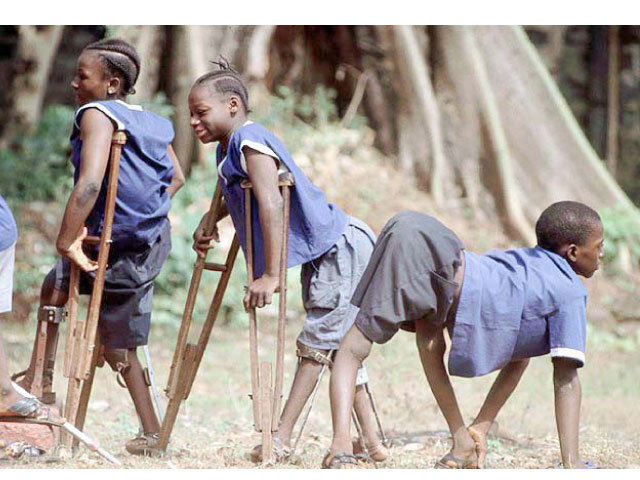Although that brings the world another step closer to eradication, the effort has taken far longer than was anticipated.
The agency made the historic announcement on Thursday as an independent commission of experts concluded that wild poliovirus type 3 (WPV3) has been eradicated worldwide.
This signifies a major milestone for medicine and humanity after the successful eradication of smallpox and wild poliovirus type 2.
Before this feat was achieved, there were three types of wild poliovirus, which, while scientifically different, cause the same symptoms, including paralysis or even death.
The certification announced the eradication of type 3 only four years after GCC certified that the world was free from type 2, with the last case detected in 1999 in India.
The last case of type 3 in Africa was detected in northern Nigeria in 2012 and since then, the strength and reach of global surveillance have been critical to verify that this strain is truly gone.
The world was declared free of type 2 four years ago – and now, WHO has said type 3 has also been eradicated.
Director-General, WHO and Chair of the Global Polio Eradication Initiative (GPEI) Polio Oversight Board, Tedros Ghebreyesus, said the agency remains fully committed to ensuring that all necessary resources are made available to eradicate all poliovirus strains. We urge all our other stakeholders and partners to also stay the course until final success is achieved.
“The achievement of polio eradication will be a milestone for global health. Commitment from partners and countries, coupled with innovation, means of the three wild polio serotypes, only type one remains,” he said.
WHO Regional Director for Africa, Matshidiso Moeti, said the “eradication of wild poliovirus type 3 is a major milestone towards a polio-free world, but we cannot relax.”
“Countries must strengthen routine immunization to protect communities, ramp up routine surveillance so that we are able to detect even the slightest risk of polio re-emerging and ensure the timeliness and quality of outbreak response in the event that a case is detected.
“This job is not finished until wild poliovirus type 1 is globally eradicated, along with concerning outbreaks of circulating vaccine-derived poliovirus,” she added.
There are three individual and immunologically distinct wild poliovirus types: wild poliovirus type 1, type 2 and type 3. All have identical symptoms and cause irreversible paralysis or even death. However, the genetic and virologic differences in the types mean that all have separate viruses.
Polio usually affects children under five. The WHO estimates one in 200 cases leads to irreversible paralysis. Death can occur when breathing muscles are affected by paralysis.
There is no cure but the polio vaccine protects children for life.
Type 1 is still endemic in Afghanistan and Pakistan but the last detected case in Nigeria was in August 2016.
Vaccine derived polio
However, there is a new form of polio known as Circulating Vaccine- derived poliovirus circulating in some countries in Africa. Currently, 12 African countries in the WHO African Region, namely: Angola, Benin, Cameroon, Central African Republic, Chad, Democratic Republic of the Congo, Ethiopia, Ghana, Niger, Nigeria, Togo and Zambia are experiencing the outbreak.
Vaccine-derived polioviruses are rare, but these viruses are sometimes found in severely under-immunized populations living in areas with inadequate sanitation. When children are immunized with the oral polio vaccine, the live virus replicates in their intestines for a short time to build up the needed antibodies and is then excreted.
If immunisation coverage remains low in a community and sanitation remains inadequate, the excreted viruses will be transmitted to susceptible populations, leading to genetic changes and the emergence of vaccine-derived polioviruses.
Source: Premiumtimes

 It is good news from the health sector as experts have announced that another strain of wild poliovirus has been eradicated globally. This news was shared by the World Health Organisation in a press statement on Thursday to mark World Polio Day.
It is good news from the health sector as experts have announced that another strain of wild poliovirus has been eradicated globally. This news was shared by the World Health Organisation in a press statement on Thursday to mark World Polio Day.




